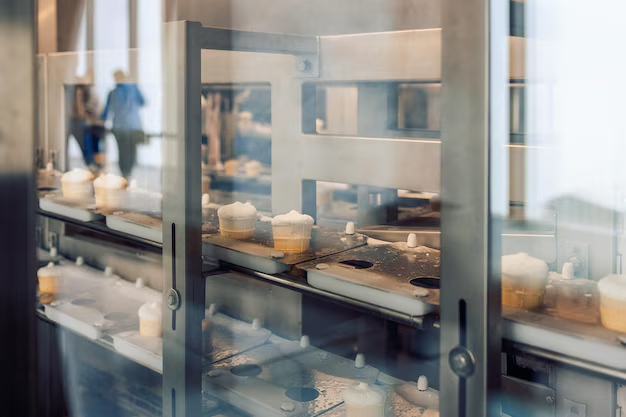Maintaining Optimal Temperatures: A Guide to Commercial Refrigerators
In the bustling world of food service, the commercial refrigerator stands as a silent workhorse, tirelessly preserving the freshness and safety of ingredients and prepared foods. But what temperature should a commercial refrigerator be set at? The right temperature is crucial not only for compliance with health regulations but also for maintaining the quality of the products stored within. This comprehensive guide will delve into the optimal settings for commercial refrigerators, exploring best practices and providing insights to enhance both efficiency and food safety.
📉 Understanding Ideal Temperature Ranges
Standard Guidelines for Refrigerators
For health and safety, commercial refrigerators should typically be set at or below 40°F (4°C). This benchmark is widely recommended to inhibit bacterial growth, thereby ensuring that perishable food items remain safe for consumption.
- Refrigerator Temperature: Maintain between 33°F to 40°F (0.5°C to 4°C)
- Freezer Temperature: Maintain at 0°F (-18°C) or lower
Regulatory Compliance
Commercial food storage is subjected to strict regulations. Different jurisdictions have their own health department guidelines, but they generally align with the temperature ranges mentioned above. Ensure compliance by consulting local health codes relevant to your operation. Failure to adhere to these standards can result in hefty fines and, more importantly, risks to public health.
🌡️ Why Temperature Matters
Food Safety Concerns
Temperature plays a pivotal role in food safety, impacting:
- Bacterial Growth: Lower temperatures slow down bacteria multiplication, reducing spoilage.
- Food Quality: Proper storage temperature preserves taste, texture, and overall quality.
Economic Impact
Correctly setting and maintaining commercial refrigerator temperatures can lead to significant financial benefits:
- Reduces Food Waste: Proper temperatures help prevent spoilage, minimizing waste.
- Energy Efficiency: Efficient temperature settings and well-maintained equipment reduce energy consumption.
📋 Factors Influencing Temperature Setting
Load and Storage Practices
The manner in which a refrigerator is loaded can affect its internal temperature:
- Avoid Overloading: Crowding can obstruct air circulation, leading to uneven cooling.
- Proper Organization: Systematic storage maximizes airflow and cooling efficiency.
Ambient Conditions
External factors such as the room’s ambient temperature and humidity can influence refrigerator performance. Ensure that refrigerators are placed away from heat sources and shielded from direct sunlight for optimal function.
Regular Maintenance
Routine maintenance checks are crucial:
- Clean Coils: Dirty condenser coils can overheat and reduce efficiency.
- Door Seals: Ensure door gaskets are tight to prevent cold air leakage.
- Thermometer Accuracy: Regularly verify that internal thermometers provide accurate readings.
🛠️ Practical Tips for Temperature Management
Daily Checks
Implement a system for daily temperature checks. Utilize a calibrated thermometer placed in a central location within the refrigerator, ensuring it accurately reflects the average internal temperature.
Technology and Monitoring Systems
Leverage technology to stay informed about temperature fluctuations. Modern commercial refrigerators often come with digital temperature monitoring systems. Some even offer remote notifications to alert you of any changes immediately.
Emergency Preparedness
Have a plan in place for power outages or equipment failures. This might include:
- Backup Generators: Ensure that generators are in working order.
- Contingency Protocols: Develop a plan for the transfer of perishables to alternate storage quickly if needed.
🔍 Exploring Subtopics: Beyond Basic Temperature Control
Humidity Control
In addition to temperature, humidity levels also play a crucial role in food preservation. Some commercial units allow for humidity control, which can be particularly beneficial for specific items like fruits and vegetables.
Specialized Storage Needs
Some perishable goods require specialized storage conditions:
- Seafood and Meat: Often stored at slightly lower temperatures than other perishable items.
- Bakery Goods: May benefit from separate storage to maintain freshness.
Energy Consumption and Sustainability
Modern solutions focus on reducing energy consumption while maintaining optimal temperatures. Eco-friendly refrigerators offer energy-efficient technology through better insulation and advanced cooling systems.
📝 Summary: Key Takeaways 📝
- 🌡️ Optimal Range: Set refrigerators between 33°F to 40°F (0.5°C to 4°C) and freezers at 0°F (-18°C).
- 📊 Monitor Regularly: Daily temperature checks and maintenance are essential.
- 🔄 Efficient Loading: Avoid overloading to ensure proper air circulation.
- 🏠 Placement: Keep units away from heat sources.
- 🔔 Use Technology: Implement digital monitoring for more consistent management.
- ⚡ Energy & Sustainability: Opt for energy-efficient models when possible.
Navigating the complexities of temperature settings in commercial refrigeration can seem daunting, but understanding and implementing the basic guidelines will place your business on firm ground. With the right attention to temperature control, you can enhance food safety, optimize operational efficiency, and positively impact your bottom line, ensuring your business thrives in the competitive landscape of food service.
